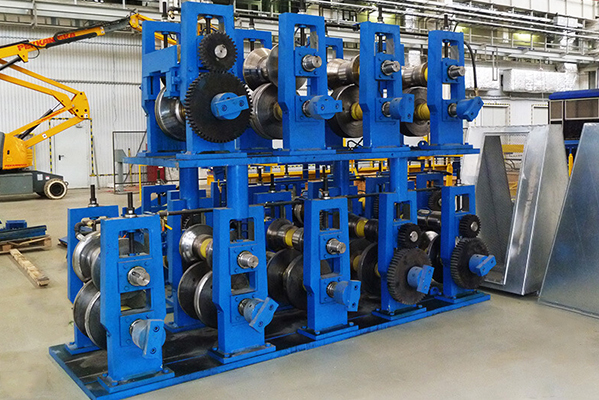Navigation Menu
Contact Us
- Email:
- info@wxavatar.com
- Address:
- Yurong Village, Yuqi Street, Huishan District, Wuxi, China.
Release Date:Mar 26, 2025 Visit:41 Source:Roll Forming Machine Factory
Railroads have been a vital part of transportation infrastructure for nearly two centuries, moving people and goods across continents with remarkable efficiency. The modern railroad system relies on numerous specialized components that work together to ensure safe, reliable operations. This article explores the key equipment used in rail systems and their critical functions.
Track Components: The Foundation of Rail Transport
Railroad tracks form the backbone of the entire system, consisting of several essential elements:
Rails: The parallel steel beams that guide train wheels. Modern rails are typically made of high-carbon steel for durability and come in standardized lengths (usually 39 or 78 feet) that are welded together for seamless travel.
Railroad ties (sleepers): Traditionally made of wood (often treated hardwood) but increasingly of concrete or composite materials, these perpendicular components distribute train weight to the ballast and maintain proper gauge (distance between rails).
Ballast: The crushed stone bed beneath and around ties that provides drainage, prevents vegetation growth, and maintains track alignment by resisting lateral movement.
Fastening systems: Includes spikes, clips, bolts, and plates that secure rails to ties. Elastic fasteners are now common as they allow for thermal expansion while maintaining constant tension.
Switches and crossings: Mechanical systems that enable trains to change tracks. A switch consists of movable rails (points), a mechanical operating mechanism, and stock rails. Crossings allow wheels to pass from one track to another where rails intersect.
Rolling Stock: The Moving Parts
Locomotives are the power units of trains, with modern versions using either diesel-electric or electric propulsion systems. Key components include:
Prime mover (diesel engine or pantograph for electric collection)
Traction motors that drive the wheels
Control systems for acceleration and braking
Couplers for connecting to other equipment
Freight cars come in numerous specialized types:
Boxcars for general merchandise
Tank cars for liquids and gases
Hopper cars for bulk materials like coal or grain
Flatcars for oversized loads
Refrigerated cars for perishables

Passenger cars include:
Coaches with seating
Sleeping cars for long-distance travel
Dining cars
Lounge/observation cars
Signaling and Communication Systems
Modern railroads employ sophisticated systems to maintain safe operations:
Block signaling: Divides tracks into sections and uses lights or semaphores to indicate whether a block is occupied
Automatic Train Control (ATC): Continuously monitors train speed and can apply brakes if necessary
Positive Train Control (PTC): Advanced system that automatically stops trains to prevent certain accidents
Track circuits: Electrical systems that detect train presence on a section of track
Crossing signals: Lights, gates, and bells at road intersections
Maintenance-of-Way Equipment
Specialized machines keep railroads in optimal condition:
Tampers: Machines that pack ballast under ties to correct track geometry
Rail grinders: Remove irregularities from rail heads to extend rail life
Ballast regulators: Distribute and shape ballast
Tie inserters: Automate replacement of deteriorated ties
Rail handlers: Lift and position heavy rails during construction or repair
Geometry cars: Measure track alignment, surface, and gauge to identify maintenance needs
Station and Terminal Equipment
Passenger and freight terminals require specialized infrastructure:
Platforms at various heights to match different car types
Loading docks and ramps for freight operations
Cranes and hoists for intermodal transfers
Coaling towers and water tanks (historically important for steam locomotives)
Yard control towers for managing complex switching operations
Modern Technological Advancements
Recent innovations are transforming railroad operations:
Composite materials for lighter, more durable components
Wheel temperature sensors to detect overheated bearings
Automated inspection systems using machine vision
Energy recovery systems that store braking energy
Predictive maintenance technologies using IoT sensors
From the simple spike that holds a rail in place to the sophisticated computers managing entire networks, railroad components form an integrated system of remarkable complexity. Each piece plays a vital role in ensuring the safe, efficient movement that makes rail transport one of the most energy-efficient land transportation methods available today. As technology advances, these components continue to evolve, making railroads smarter, safer, and more sustainable for future generations.